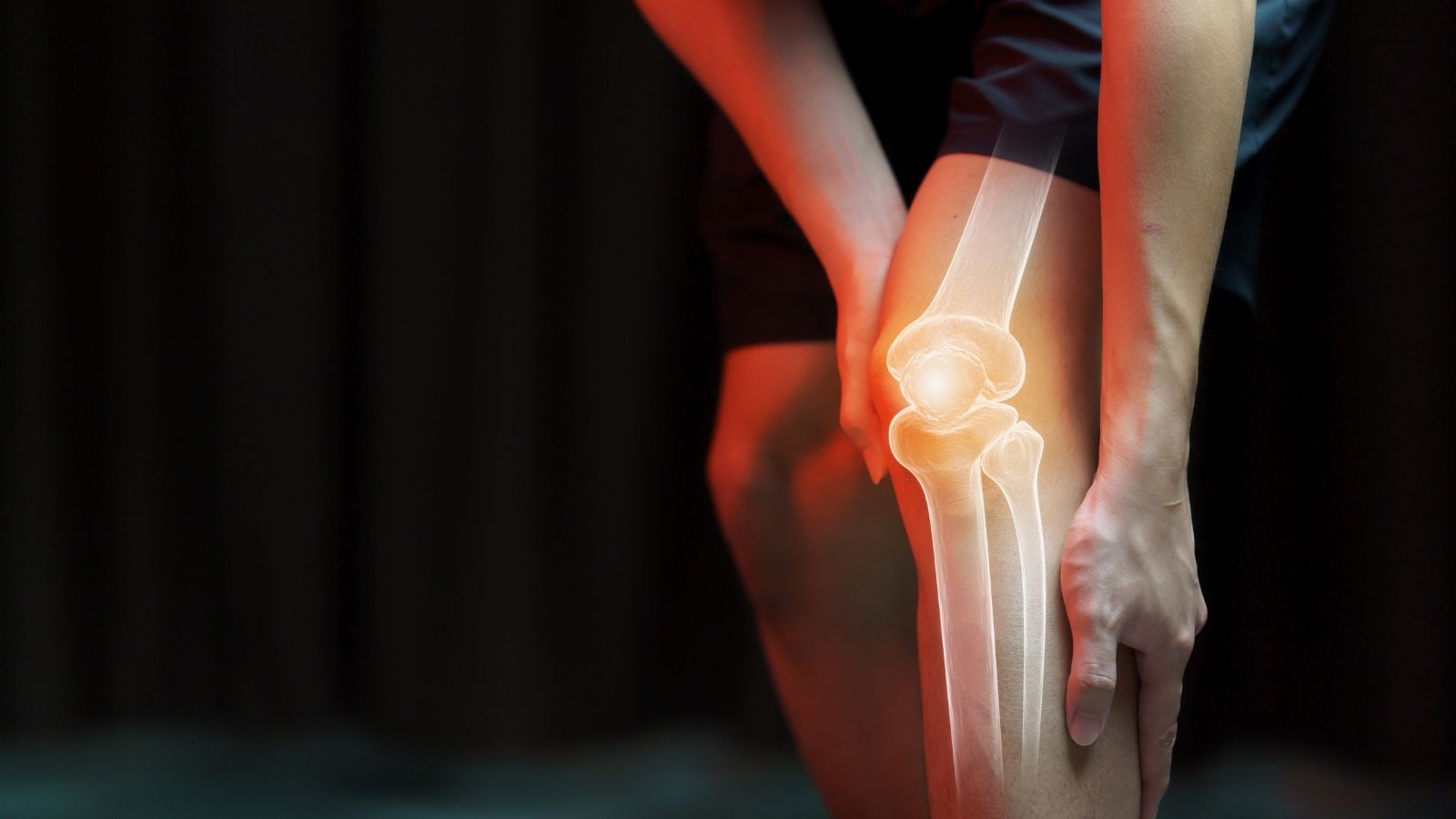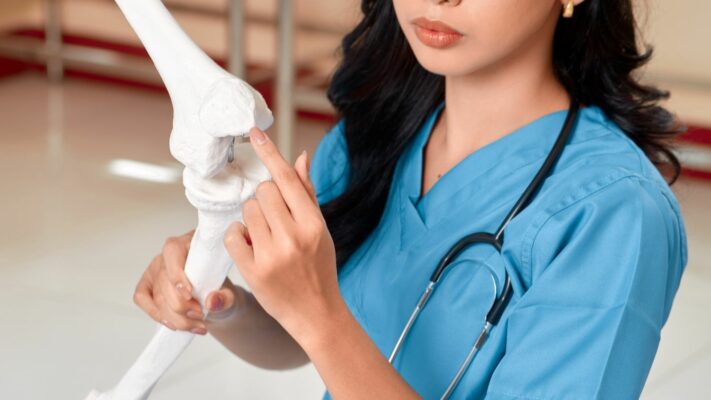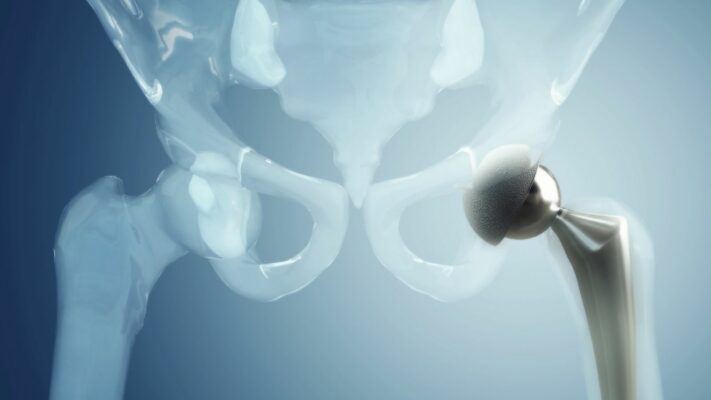Prof. Dr. Murat Demirel, one of the best orthopedic doctors in Ankara specializing in the treatment of knee pain, has many years of experience in diagnosing and treating knee pain caused by various reasons such as sports injuries, osteoarthritis, meniscus tears, ligament injuries, and cartilage damage. Knee pain is a common complaint that lowers quality of life, restricts mobility, and, if not treated correctly in time, can lead to more serious joint problems. Prof. Dr. Demirel offers personalized treatment plans for his patients in hospitals in Ankara with advanced medical equipment and high hygiene standards.
Depending on the cause of the condition, treatment may include medication, physical therapy, PRP or stem cell applications, intra-articular injections, and, if necessary, arthroscopic surgical methods. Following knee pain treatment, doctor’s recommendations ensure that the recovery process is fast, safe, and lasting. In addition, by providing transparent and up-to-date information about knee pain treatment costs in Ankara, he helps patients make informed decisions. You can also protect your knee health, reduce your pain, and regain an active life by contacting him immediately and booking an appointment.
| Symptom Name | Knee Pain |
| Affected Area | Knee joint (front, back, inner, outer parts) |
| Possible Causes | Trauma (sprain, ligament tear, meniscus tear), osteoarthritis, chondromalacia patella, tendinitis, bursitis, rheumatic diseases, infection |
| Conditions That May Accompany Symptoms | Swelling, increased warmth, redness, restricted movement, clicking sound, giving way sensation |
| Diagnostic Methods | Medical history, physical examination, X-ray, MRI, ultrasound, blood tests (for infection or rheumatic markers) |
| Treatment Methods | Depending on the underlying cause: rest, ice application, NSAIDs, physical therapy, injections, surgical intervention |
| Surgical Interventions | Meniscectomy, anterior cruciate ligament reconstruction, arthroscopy, knee replacement |
| Complications | Chronic pain, instability, arthritis, restricted movement |
| Recovery Process | Varies depending on the cause: may last from a few days to several months |
| Prevention Methods | Correct exercise techniques, avoiding overload, weight control, strengthening knee muscles |
| Follow-up Process | Monitoring symptoms, physical therapy applications, advanced tests in case of recurring pain |


Prof. Dr. Murat Demirel
Orthopedics and Traumatology Specialist
Orthopedics Specialist Prof. Dr. Murat Demirel was born in Ankara in 1974. He completed his primary education at Ankara Kavaklıdere Primary School and his secondary and high school education at Ankara Atatürk Anatolian High School. Dr. Demirel graduated from Ankara University Faculty of Medicine in 1998 and completed his residency in Orthopedics and Traumatology at Ankara Numune Training and Research Hospital, 1st Orthopedics and Traumatology Clinic, in 2004.
PhD
Ankara University Institute of Health Sciences
Specialization
Ankara Numune Training and Research Hospital, 1st Orthopedics Clinic
Medical School
Ankara University Faculty of Medicine
Yazı İçeriği
How to Recognize a Serious Symptom of Knee Pain?
Although knee pain is a common condition, some symptoms are considered “alarm bells” and require immediate medical attention. These conditions may indicate serious and potentially permanent damage inside the knee joint. Not ignoring these important signals from your body is the most important step in preventing bigger problems in the future.
If you experience any of the following conditions, it is critical to go to the emergency room without delay. These symptoms suggest situations far beyond a simple sprain, such as a fracture, dislocation, or a complete ligament tear.
The “red flag” symptoms requiring urgent medical assistance are as follows:
- Visible deformity or displacement of the knee
- A distinct “pop” or “snap” sound at the time of injury
- Inability to bear weight on the knee or inability to step
- Unbearable and uncontrollable severe pain
- Sudden and excessive swelling within the first few hours after injury
- Inability to move the knee after a fall or accident
- Bone becoming visible along with an open wound
When Should You See a Specialist for Knee Pain?
Not every knee pain requires emergency treatment, but if there are persistent or concerning symptoms, it is best to consult an Orthopedics and Traumatology specialist rather than postponing the situation. Some pains that are thought to “pass over time” may actually be early signs of conditions like osteoarthritis that can progress if untreated. Early diagnosis always means simpler and more effective treatment options.
Some situations indicating it’s time to consult a specialist are listed below. These symptoms may suggest an infection, inflammatory rheumatism, mechanical problem, or another underlying condition requiring treatment in your knee.
Situations indicating you should schedule a planned appointment:
- Pain starting after a fall or trauma that does not go away
- Noticeable swelling, redness, and warmth in the knee
- Knee pain accompanied by fever or chills
- Pain that wakes you up at night or persists even at rest
- Difficulty bending or straightening the knee
- Pain causing limping while walking
- Locking or catching sensation in the knee during movement
- Sudden giving way or instability in the knee
- Pain lasting more than a few weeks and not responding to home treatments
Why Does Knee Pain Occur After a Sudden Injury?
Acute knee pain usually arises from a sudden movement or an unexpected accident in the normal course of life. Especially athletes or those with active lifestyles are more likely to experience such injuries. These injuries cause damage to different structures in the knee and manifest with sudden and sharp pain. Just like a delicate part of a machine suddenly breaking, knee structures can tear or rupture when exposed to forces beyond their capacity.
The most common types of acute injuries are:
Anterior Cruciate Ligament (ACL) Tear: Usually occurs when suddenly changing direction on an artificial turf, landing awkwardly after a basketball jump, or twisting the knee while skiing. Patients often report hearing a distinct “pop” or “snap” at the time of injury. This is followed by rapid swelling of the knee and almost complete inability to bear weight.
Meniscus Tear: These C-shaped cartilage structures that act as shock absorbers between the two bones of the knee can tear, especially during sudden twisting movements while body weight is on the knee. Even a simple wrong move when standing up from a chair can tear a weakened meniscus due to aging. Sharp pain on the inner or outer side of the knee at the joint line, and sometimes “locking” of the knee, are typical symptoms.
Medial and Lateral Collateral Ligament (MCL/LCL) Injuries: Usually result from blows to the side of the knee. For example, during a football match, a blow to the outside of the knee can injure the medial collateral ligament (MCL). In this case, the pain is concentrated on the inner or outer edge of the knee.
Fractures: High-energy accidents (traffic accidents, falls from height) can cause fractures in the kneecap (patella) or other bones forming the knee. Fractures manifest with severe pain, swelling, bruising, and complete inability to move.
Contact us for detailed information and an appointment!
How Does Knee Pain Progress Due to Osteoarthritis?
Osteoarthritis, commonly known as “joint degeneration,” ranks first among the most common causes of chronic knee pain. This condition arises not from a sudden injury but as a result of time and usage. Just like the treads of a car tire that wear down over years of use, the protective cartilage tissue in the knee joint gradually thins, roughens, and loses its cushioning feature. When the cartilage completely wears away, the underlying bone surfaces begin to rub against each other, which is the main cause of pain, stiffness, and difficulty in movement.
Pain caused by osteoarthritis usually develops insidiously. At first, there may be only mild discomfort after long walks or climbing stairs. However, as the disease progresses, the pain becomes more constant and begins to affect daily life.
Typical symptoms of osteoarthritis include:
Activity-Related Pain: Pain that worsens with movement, especially activities that put pressure on the knee such as walking or squatting, and eases with rest.
Morning Stiffness: Stiffness and difficulty moving in the knee when getting up in the morning or after sitting for a long time, usually resolving within half an hour.
Grinding Sound (Crepitus): Clicking or grinding noises felt or heard when bending or straightening the knee. This results from roughened cartilage surfaces rubbing against each other.
Swelling: Mild swelling in the knee, especially after a tiring day.
Restricted Mobility: As the disease progresses, the ability to fully bend or straighten the knee decreases.
Certain risk factors play an important role in the development of osteoarthritis. Knowing these factors is important for prevention or slowing the progression of the disease.
Main risk factors:
- Advanced age
- Excess weight (obesity)
- Previous knee injuries (ligament tear, meniscus tear, fracture, etc.)
- Family history of osteoarthritis (genetic predisposition)
- Occupations or sports that constantly put stress on the knee
- Female gender
How Do Rheumatic Diseases Affect Knee Pain?
The cause of knee pain is not always mechanical problems or wear-and-tear. Sometimes systemic diseases affecting the immune system or metabolism lie behind the pain. In such conditions, the knee is affected as part of a general inflammatory process. Proper diagnosis of these conditions is vital because treatment approaches differ completely.
Rheumatoid Arthritis (RA): Unlike osteoarthritis, rheumatoid arthritis is not a “wear-and-tear” disease but an autoimmune disease. In other words, for unknown reasons, the body’s own immune system perceives the synovium (the inner lining of the knee joint) as foreign and attacks it. This attack causes intense inflammation, swelling, warmth, and pain in the knee. A typical feature of RA is that it usually affects multiple joints and symmetrically (for example, both knees, both wrists). General symptoms such as morning stiffness lasting more than an hour, fatigue, and mild fever may also accompany it.
Gout Disease: This is a metabolic disorder. It occurs when uric acid produced in the body or taken with food is not excreted and accumulates in the blood, crystallizing in the joints like sharp needles. These crystals cause an attack of incredibly severe pain, swelling, redness, and tenderness, usually starting suddenly at night. After the big toe, the knee is the second most common joint affected by gout attacks.
Ankylosing Spondylitis and Psoriatic Arthritis: Although these diseases primarily affect the spine, they can also cause inflammatory pain and swelling in large joints such as the knees. If knee pain occurs together with back pain starting at a young age, these conditions should be considered.
What Types of Knee Pain Develop from Repetitive Movements and Overuse?
Sometimes knee pain does not result from a major accident or disease but from the accumulation of small, repeated stresses on the knee, much like “dripping water wearing away stone.” This type of pain is common among athletes who suddenly intensify their training, people in professions requiring repetitive movements throughout the day, or those standing for long periods in inappropriate footwear. These are called “overuse injuries.”
The most common overuse problems are:
Patellofemoral Pain Syndrome (Runner’s Knee): The most common cause of kneecap pain. The pain is felt as a dull ache in front of or around the kneecap. It becomes evident especially when climbing stairs, squatting, or after sitting for a long time (like at the cinema). It usually results from improper tracking of the kneecap within its groove.
Patellar Tendinitis (Jumper’s Knee): Common in athletes engaged in sports that require frequent jumping, such as volleyball and basketball. It causes sharp pain in the tendon just below the kneecap, especially during jumping or running. It is a typical cause of pain under the kneecap.
Bursitis: Around our knees are small fluid-filled sacs (bursae) that reduce friction between tendons and bones. In people who frequently work on their knees (such as tilers or gardeners) or from direct trauma, these sacs can become inflamed. A soft, tender swelling forms in front of the kneecap.
Iliotibial Band (ITB) Syndrome: Especially common among long-distance runners and cyclists. It occurs when the iliotibial band, a thick band stretching from the outer hip to the outside of the knee, rubs against the bony prominence on the outer knee. Pain begins on the outer side of the knee during activity and gradually worsens.
What Steps Are Taken to Diagnose Knee Pain?
Understanding the cause of your knee pain correctly is the most fundamental requirement for creating an effective treatment plan. This process is similar to a detective piecing together clues. Each piece of information helps complete the big picture. The diagnostic process usually consists of three main steps: listening to you, examining your knee, and using imaging methods if necessary.
Listening to You (Patient History – Anamnesis):
The most important part of the diagnostic process is what you tell us. Your doctor will ask you various questions to understand the story of your pain. These questions play a key role in narrowing down possible causes.
Your answers provide important clues about the source of the problem:
Physical Examination:
After listening to your explanations, it is time to let your knee “speak.” Through a comprehensive physical examination, we try to find the source of the problem in your knee. During the exam, both knees are usually compared, so the differences between the healthy and problematic knee can be clearly seen.
What will be done during the exam:
Observation: Your walking, posture, and any swelling, redness, or deformity in your knee are examined.
Palpation (Touching): By touching different parts of your knee, tender points, increased warmth, and fluid buildup can be detected.
Range of Motion: How much you can bend and straighten your knee is evaluated both actively by you and passively by the doctor.
Special Tests: Various maneuvers that apply controlled stress to the knee (such as Lachman and McMurray tests) are performed to check the health of ligaments and menisci. These tests are very valuable in identifying which structure is damaged.
Imaging Methods:
Although patient history and physical examination are often sufficient for diagnosis, sometimes imaging is needed to confirm the diagnosis or clarify the extent of the damage.
Basic imaging methods used:
X-ray: The first step to evaluate bone structures. Shows fractures, dislocations, and typical signs of osteoarthritis (such as narrowing of the joint space).
Magnetic Resonance Imaging (MRI): The best tool for soft tissues. It can show even the smallest tears or damage in ligaments, menisci, cartilage, and tendons in detail.
Ultrasound (USG): Used particularly for evaluating more superficial problems such as tendon inflammations, bursitis, cysts, and guiding knee injections.
Computed Tomography (CT): Preferred to see the detailed anatomy of complex fractures and to plan surgery.
How Can Knee Pain Be Controlled with Non-Surgical Treatments?
The vast majority of patients presenting with knee pain can be treated successfully without surgery using methods known as conservative treatments. The aim here is to relieve pain, restore knee function, and improve quality of life. Treatment usually consists of a personalized combination of approaches rather than a single method.
Lifestyle Changes and Home Care:
The first and most important step in treatment is usually under your control. Some simple changes you make can start the healing process.
PRICE Method: Particularly effective during the first 48-72 hours after acute injuries. This method includes Protection, Rest, Ice, Compression, and Elevation. Resting the knee, applying ice for 15-20 minutes several times a day, lightly wrapping with an elastic bandage, and keeping it elevated above heart level while lying down significantly reduces swelling and pain.
Activity Adjustment: Avoiding movements that trigger your pain for a while gives irritated tissues time to heal. For example, instead of running, you may choose swimming or cycling.
Weight Control: Every extra kilogram of body weight adds 4-6 times more load to your knees when walking. Losing just 5 kilos means relieving your knees of a 20-30 kilo load. This is one of the most effective and permanent solutions, especially in osteoarthritis treatment.
Knee-Friendly Nutrition: Nutrition also affects knee health. Especially in inflammatory conditions, consuming anti-inflammatory foods can be beneficial.
Some foods you can add to your diet:
- Fatty fish such as salmon and mackerel (Omega-3)
- Olive oil
- Turmeric and ginger
- Dark green leafy vegetables such as spinach and kale
- Walnuts and almonds
- Berries such as blueberries, strawberries, and blackberries
Physical Therapy and Exercise:
Physical therapy is the cornerstone of knee pain management. Exercises performed under the guidance of a physiotherapist not only reduce pain but also prevent recurrence of the problem.
Goals of physical therapy:
Strengthening: Strengthening the muscles around the knee, especially the front thigh (quadriceps), back thigh (hamstrings), and hip muscles, reduces stress on the knee and acts as a natural knee brace.
Stretching: Stretching shortened and tight muscles increases joint mobility and reduces stiffness.
Balance and Coordination (Proprioception): Exercises that improve the body’s awareness of joint position in space are very important, especially after ligament injuries, to eliminate the feeling of instability in the knee.
Medication and Injections:
These methods are usually used to control pain and allow the patient to participate more comfortably in physical therapy.
Pain Relievers and Anti-inflammatory Drugs: Medications known as non-steroidal anti-inflammatory drugs (NSAIDs) reduce both pain and inflammation. They should be used under doctor supervision. Topical gel and cream forms are a good first option because they have less risk of systemic side effects.
Knee Injections: Used when other methods are insufficient.
The most common injection types:
Cortisone: A powerful anti-inflammatory. Quickly relieves pain and swelling in flare-ups of osteoarthritis or severe inflammatory conditions.
Hyaluronic Acid (Viscosupplementation): Also known as “rooster comb” or “joint fluid” injection. Increases the lubrication of joint fluid, making movements easier and reducing pain, especially in mild-to-moderate osteoarthritis.
PRP (Platelet-Rich Plasma): Prepared from the patient’s own blood, rich in growth factors, and injected into the knee. It aims to stimulate the body’s healing mechanisms and support tissue repair.
Frequently Asked Questions
What causes knee pain?
Knee pain can be caused by joint osteoarthritis, meniscus tear, ligament injuries, cartilage problems, sprains, rheumatic diseases, inflammation, or overuse. Sudden trauma, excess weight, and muscle weakness also predispose to knee pain.
Who is more likely to experience knee pain?
Knee pain is more common in older adults, overweight individuals, athletes and physically active people, those who have had previous knee injuries, and those with a family history of joint disease.
How is knee pain diagnosed?
Diagnosis is based on the patient’s medical history, detailed symptoms, and physical examination. In necessary cases, imaging methods such as X-rays, MRI, and ultrasound are used to evaluate the inner structures of the knee.
What treatment methods are applied for knee pain?
Treatment depends on the cause of the pain. Rest, cold application, painkillers, exercise, weight control, and physical therapy are the first steps. In advanced cases, intra-articular injections, PRP, stem cell therapy, or surgical options may be considered.
What can be done at home for knee pain?
Initially, resting the knee, applying ice, elevating the leg, and using a support bandage can be helpful. Gentle stretching and strengthening exercises may also help relieve pain.
In which cases should a doctor be consulted for knee pain?
You should definitely see a doctor if knee pain is severe, persistent, wakes you at night, occurs after trauma, or is accompanied by swelling, redness, and fever. Medical support is also needed in cases of limited mobility or sudden deformity of the leg.
What exercises can people with knee pain do?
Low-impact exercises that strengthen the muscles around the knee without straining the joint are recommended. Swimming, cycling, water exercises, and exercises performed under the supervision of a physiotherapist are effective in reducing pain.
Is knee pain permanent?
Knee pain is often temporary and can be completely resolved with proper treatment. However, if there is an underlying serious joint disease or an untreated injury, the pain can become chronic.
How can knee pain be prevented from recurring?
Maintaining weight control, exercising regularly, choosing proper footwear, avoiding sudden movements and overloading are important for protecting knee health. Treatments and exercises recommended after knee injuries should not be neglected.
Which doctor should be consulted for knee pain?
For knee pain, you should primarily consult an orthopedic and traumatology specialist. In necessary cases, support may also be obtained from a physical therapy and rehabilitation specialist.




